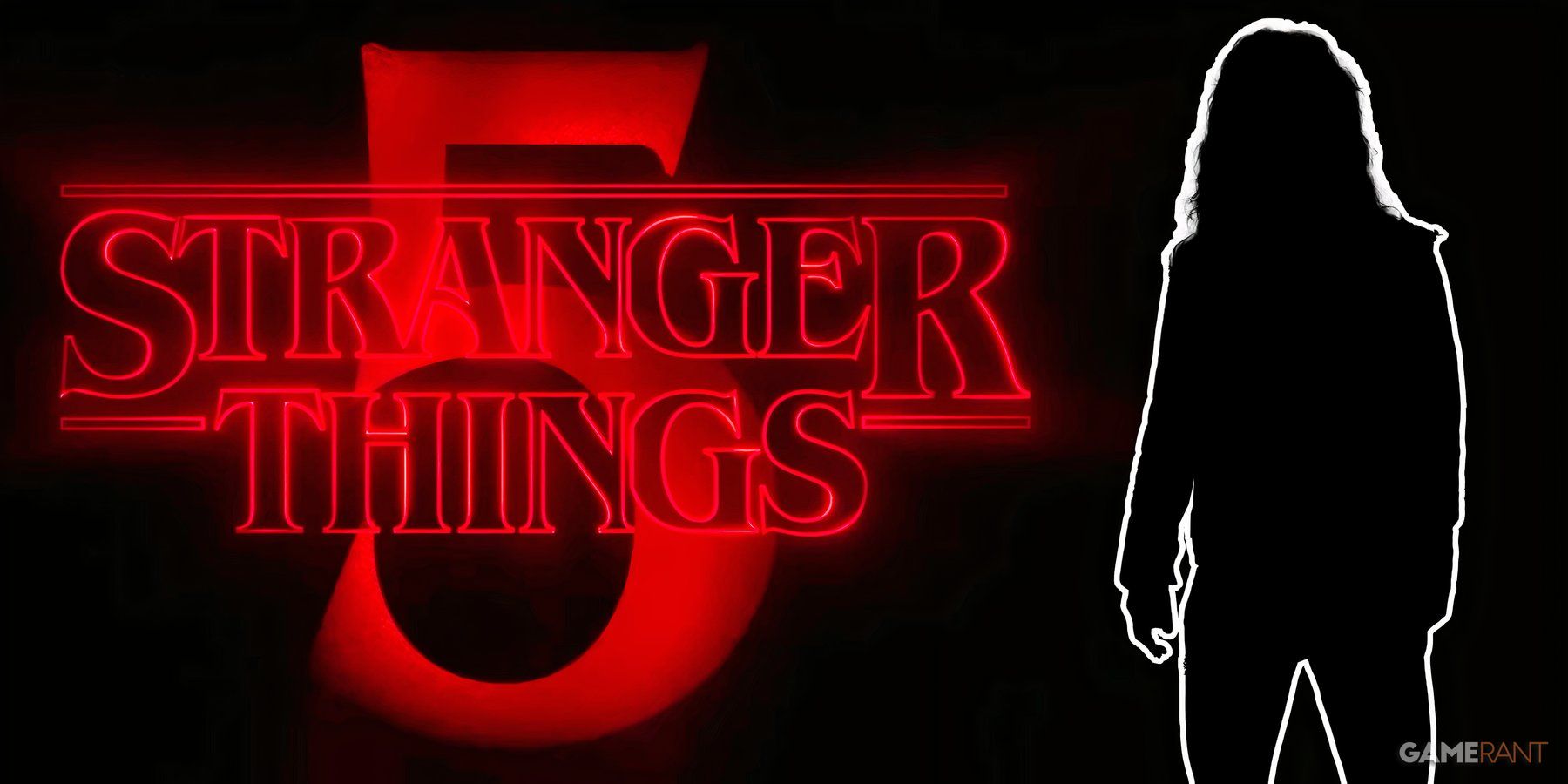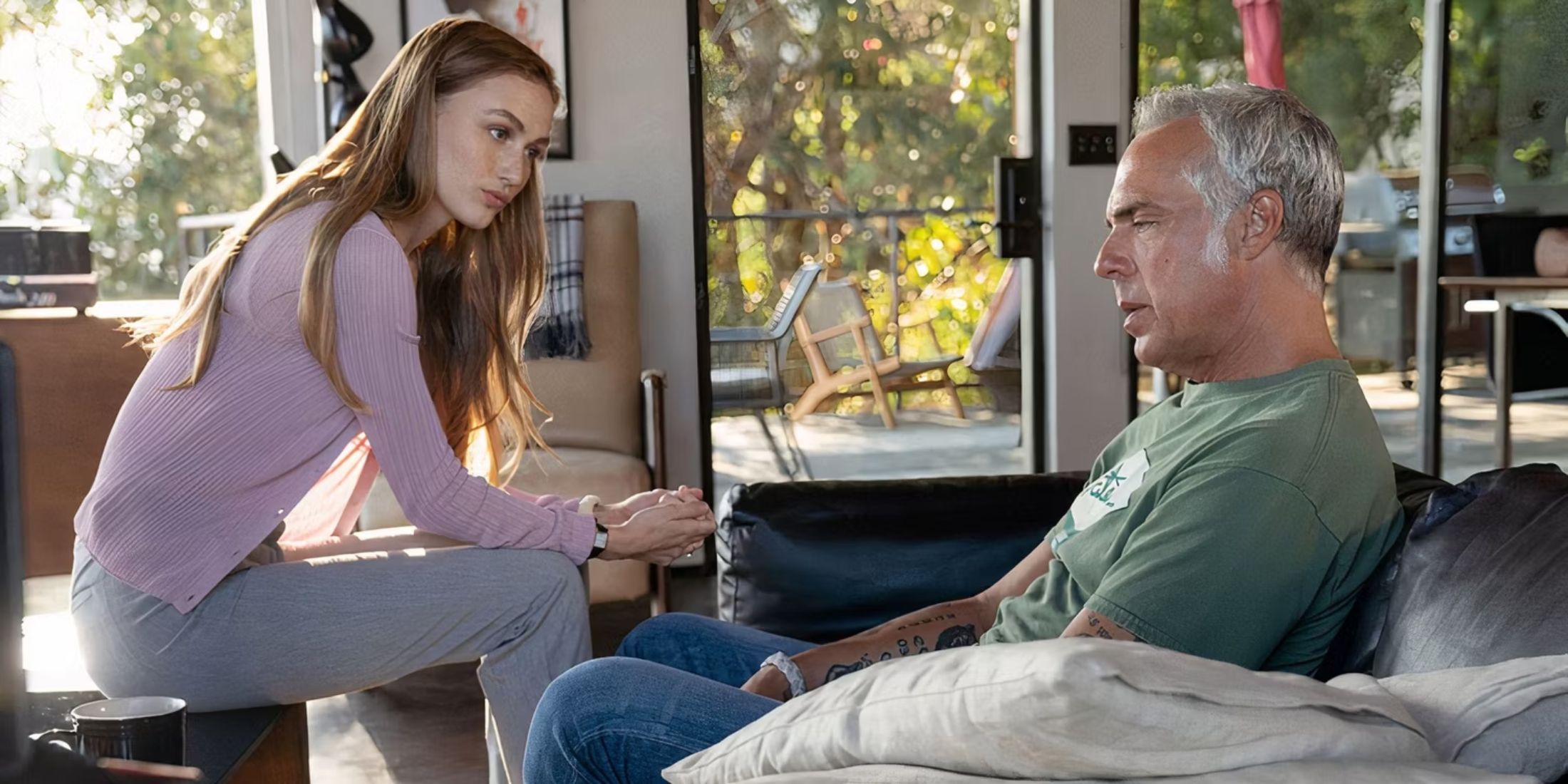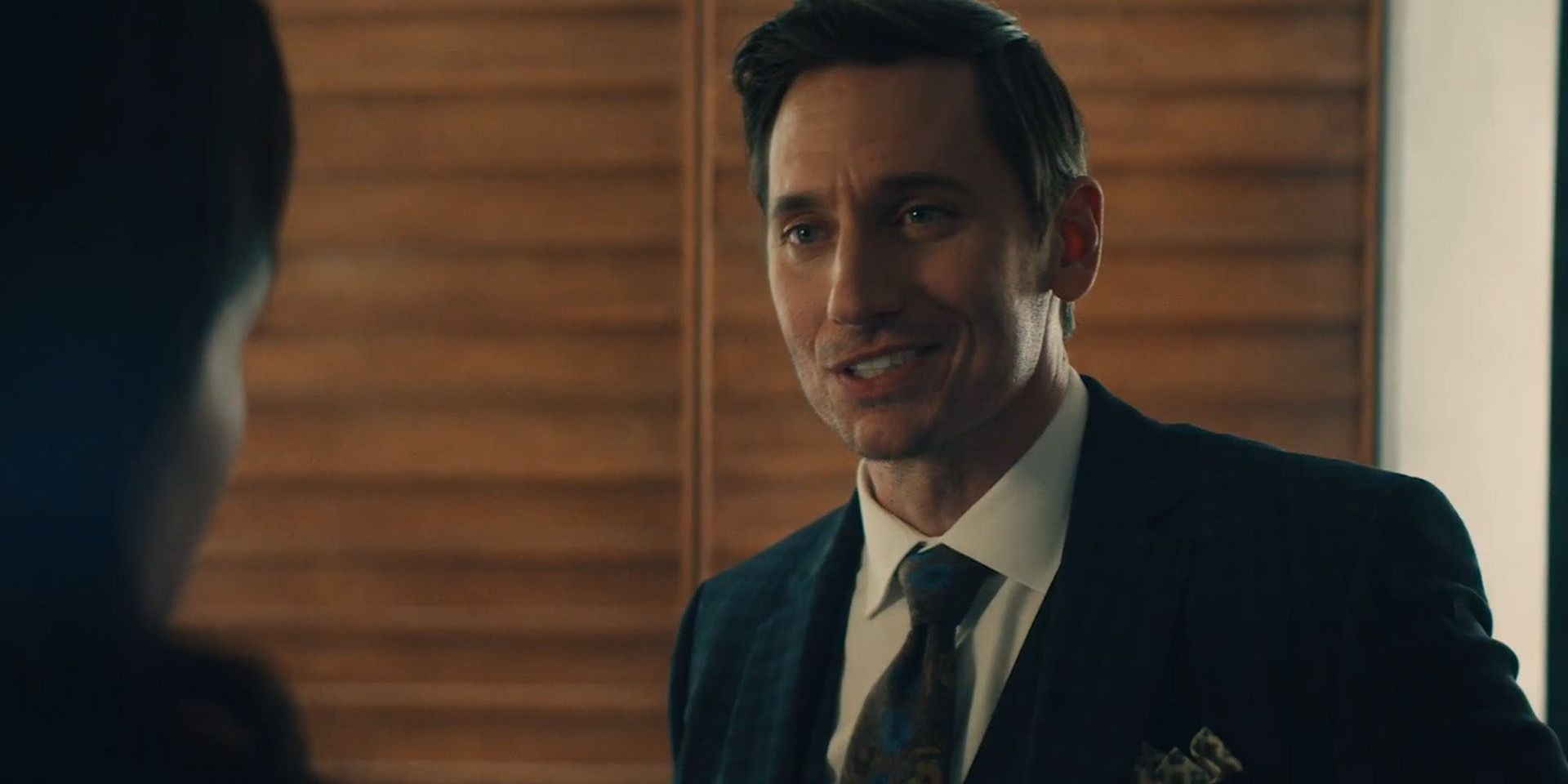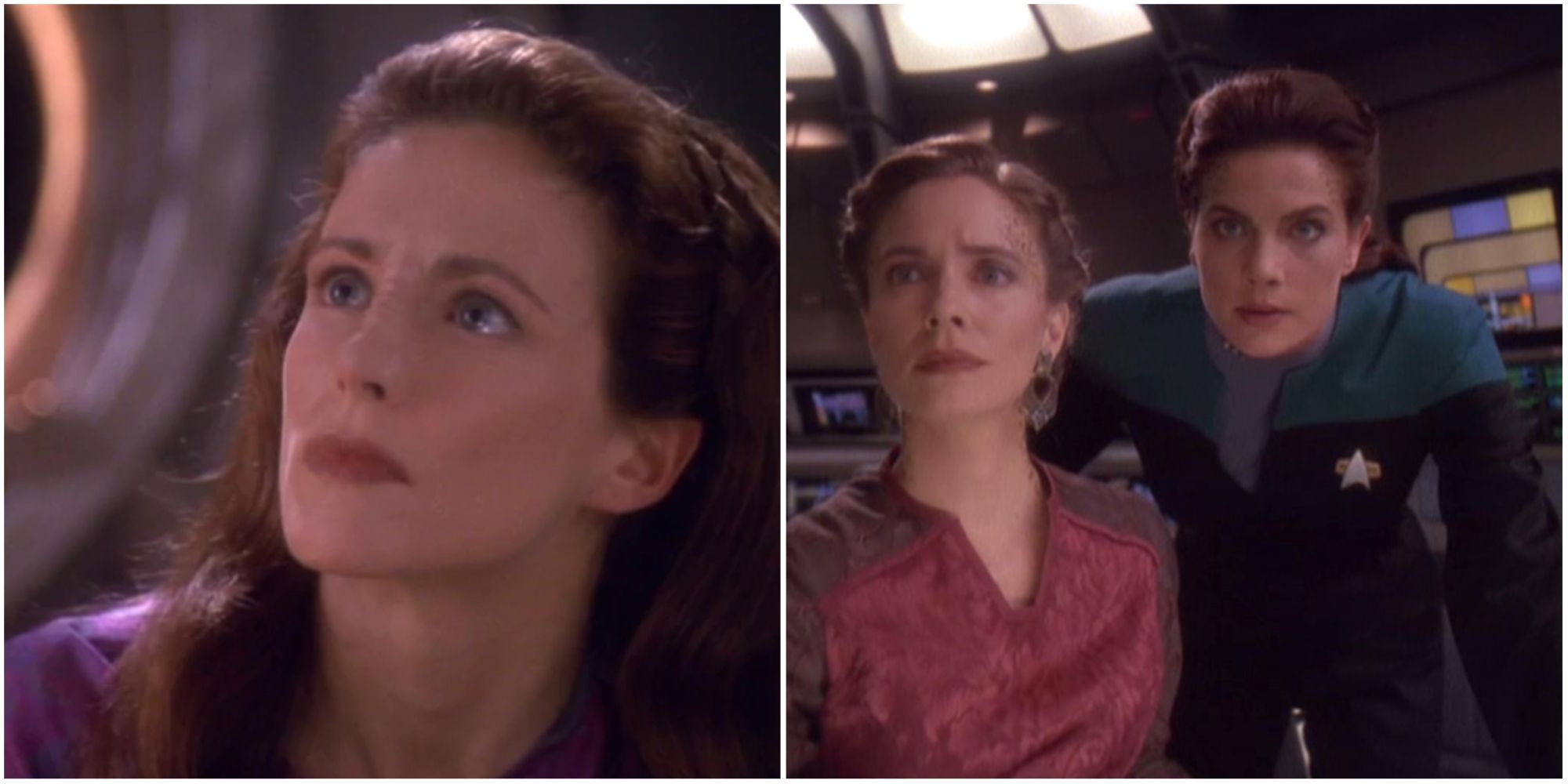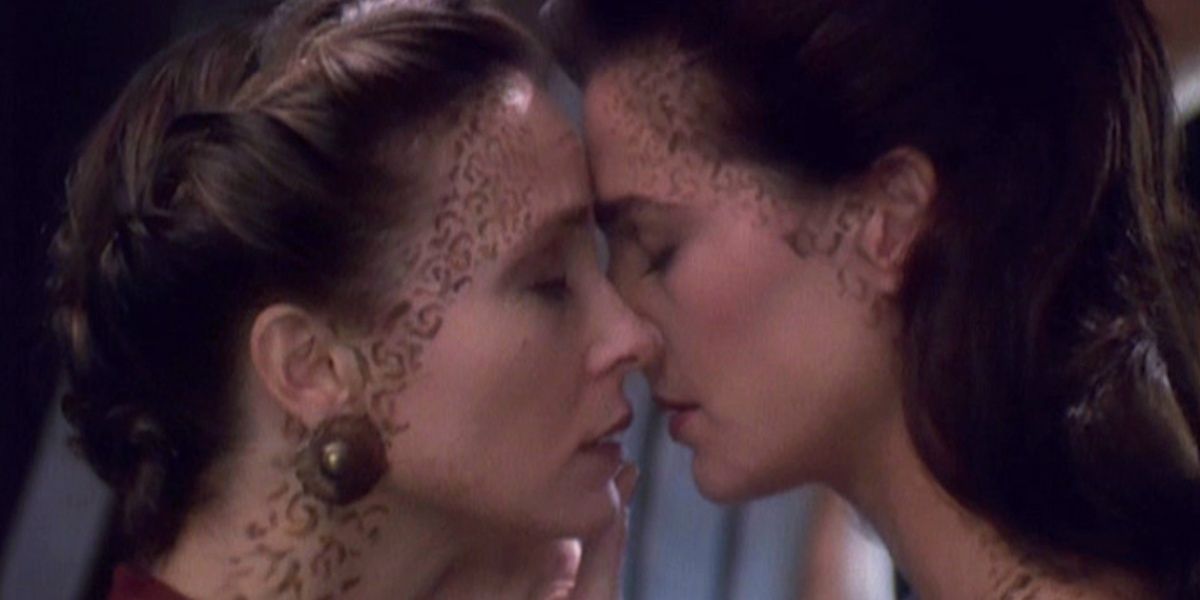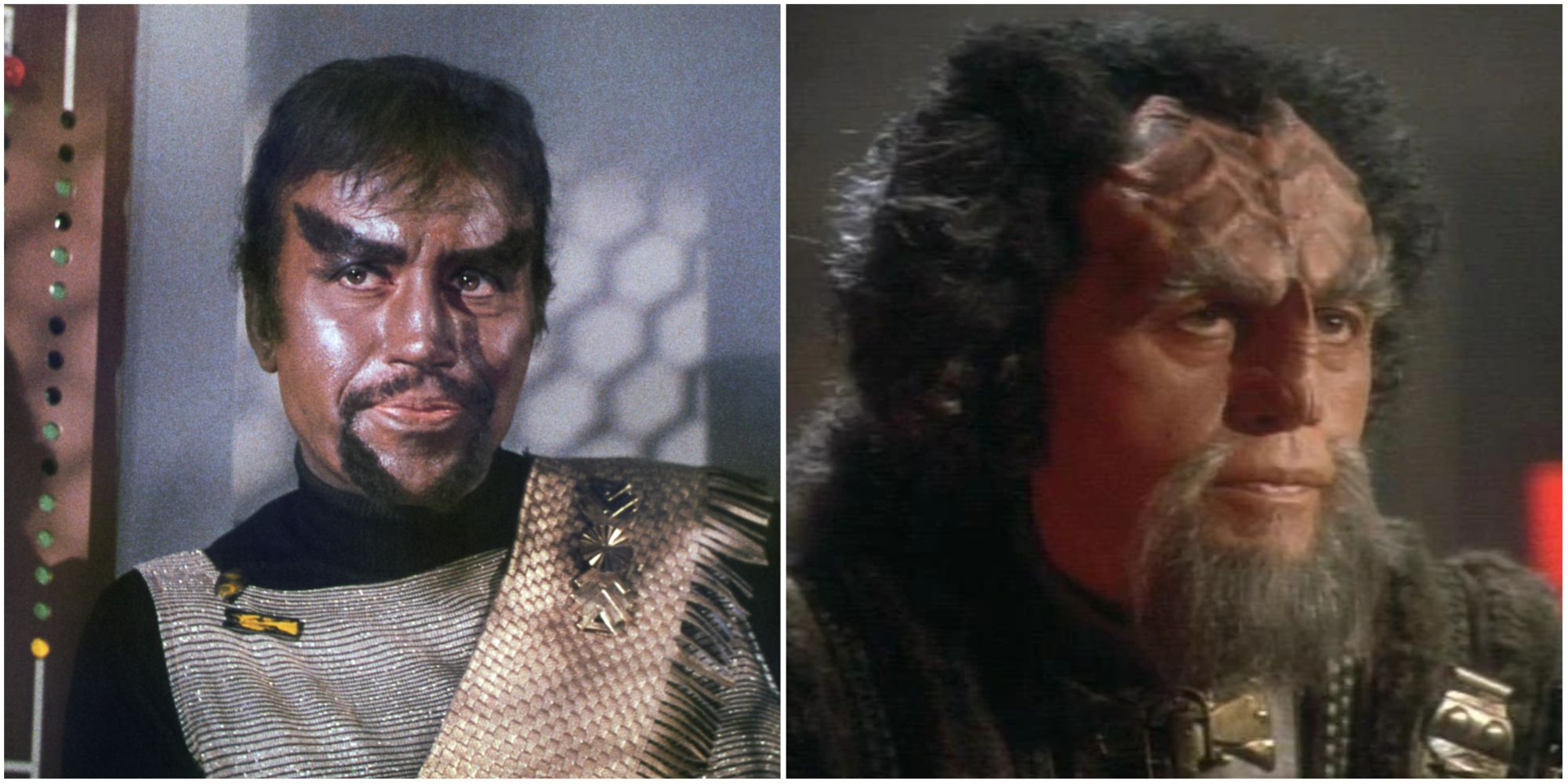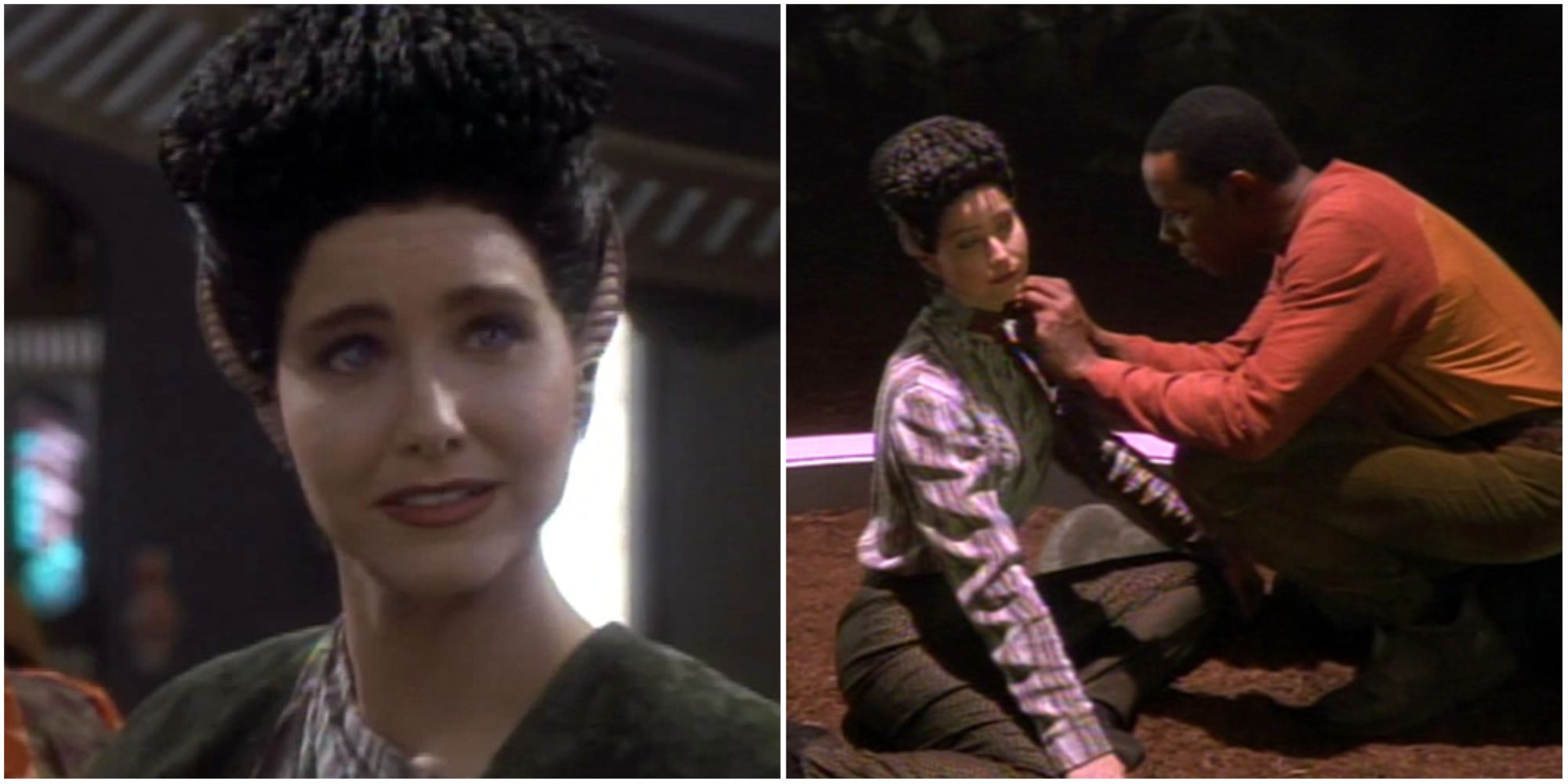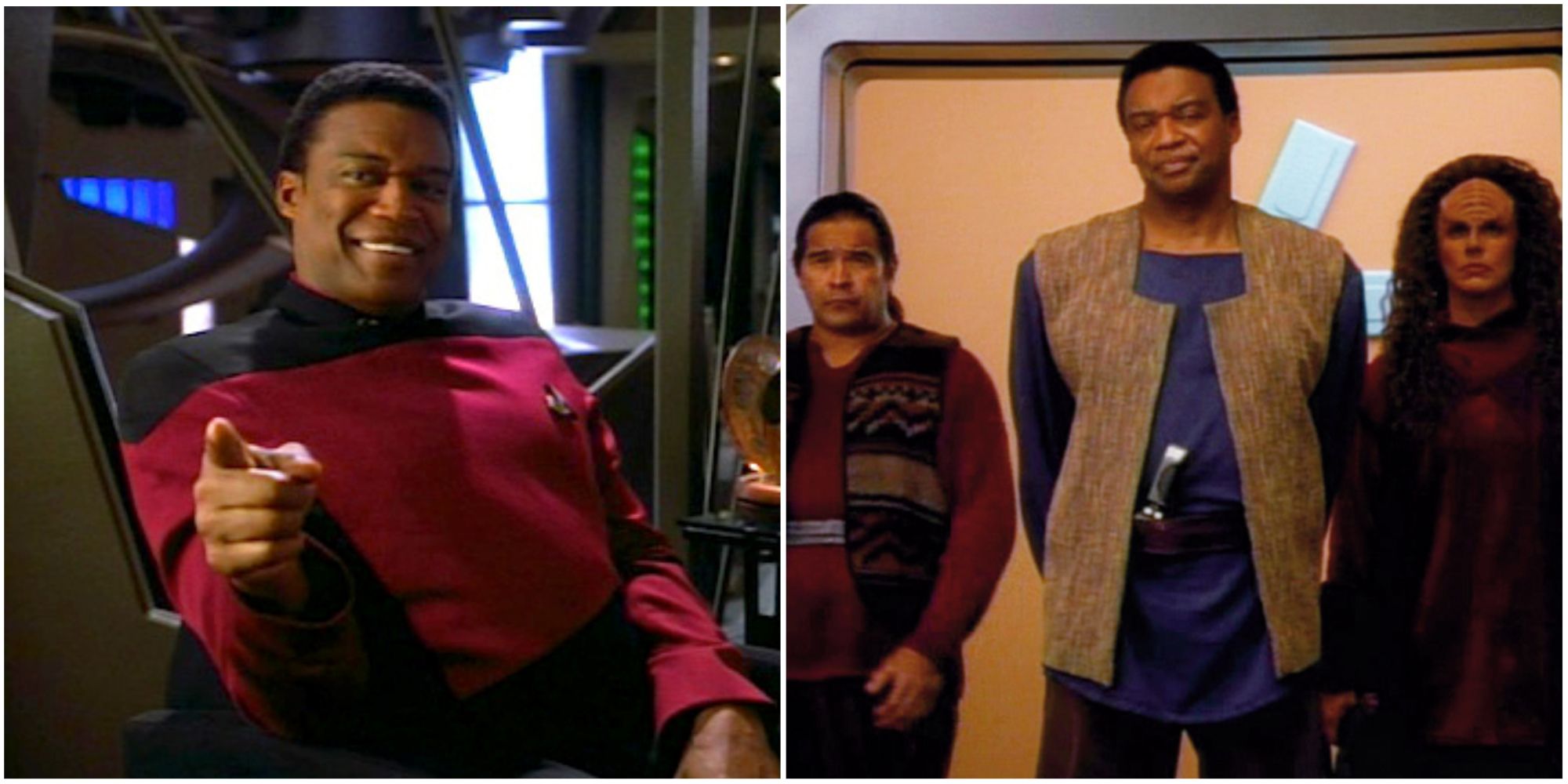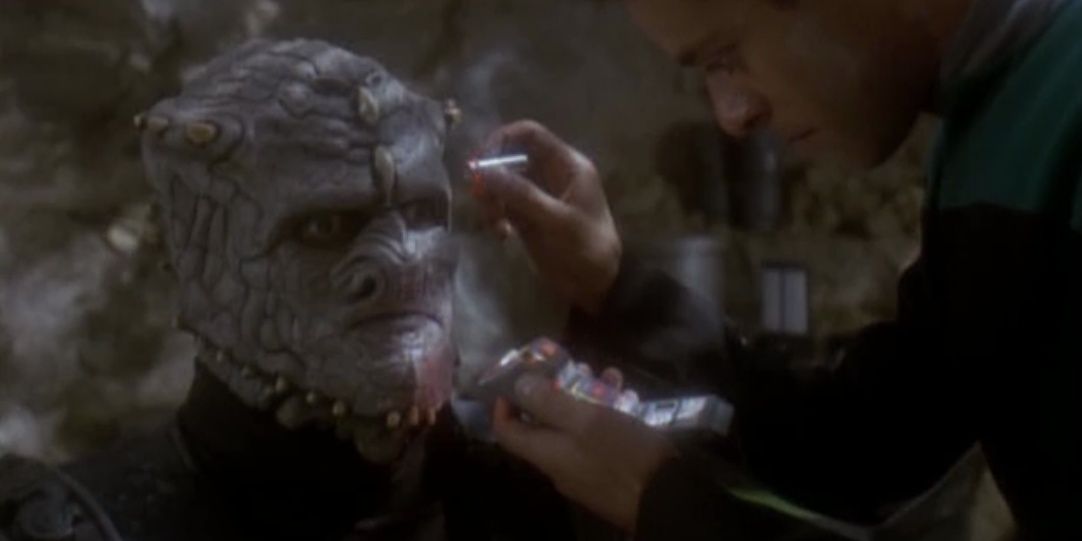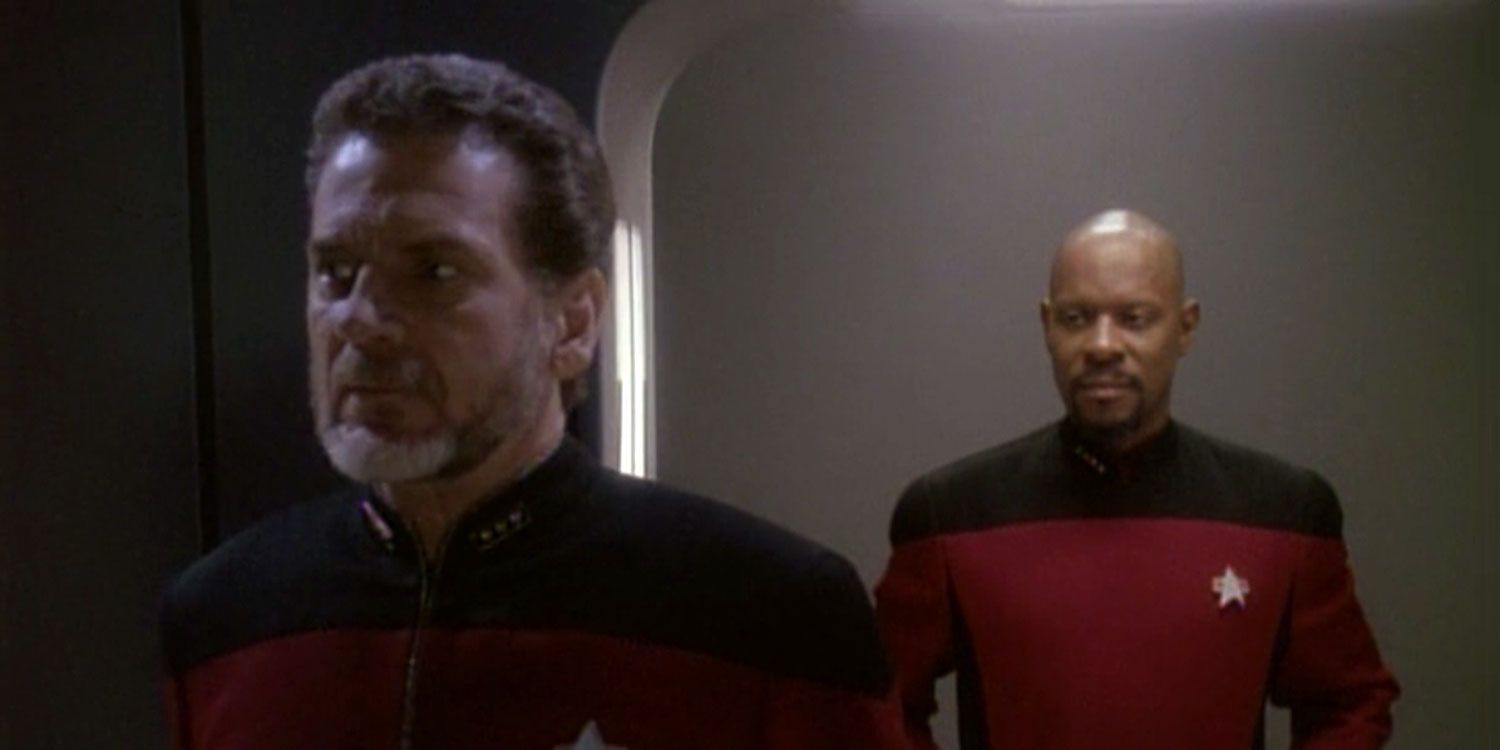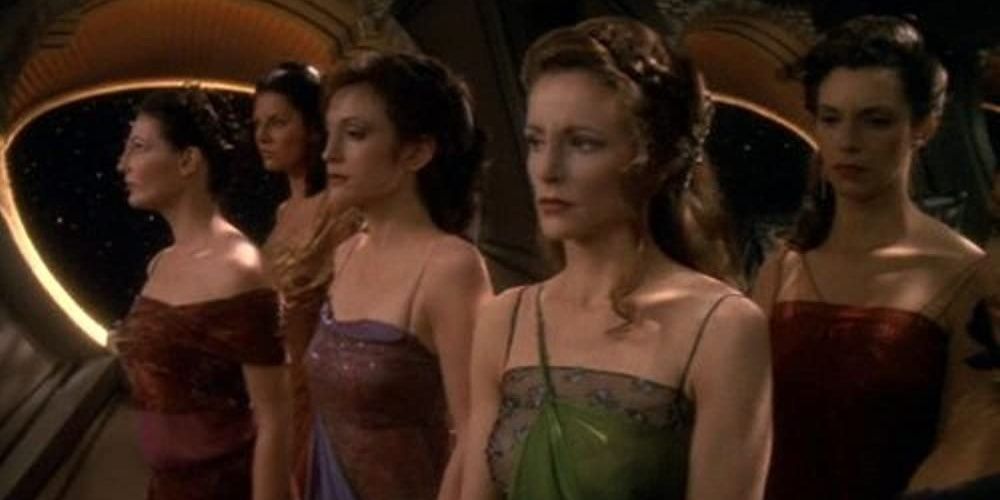Deep Space Nine is easily one of better entries in the Star Trek franchise. It turns many of the series' utopian staples on their heads, yet it maintains the sophisticated and thoughtful writing. This, of course, leads to many complex characters across the board. While main and recurring players certainly benefit from serialized storytelling, the guest stars are nothing to sneeze at.
In fact, several one-off characters that leave a lasting impression. They're not only interesting in themselves, but they often pave the way for advancements in mainstay characters and larger plotlines. For these reasons, Trekkies won't forget these one-off faces despite their meager screen time.
7 Lenara Kahn
No, she's not related to Kirk's superhuman nemesis. Lenara is the latest in a long line of hosts to the Kahn symbiont. She and Dax were married in a previous life, and their feelings are still there. Sadly, the Trill race frowns on this, as it goes against their goal of expanding their horizons and garnering new experiences with each host. Thus, the stage is set for romantic drama.
Dax usually has compelling storylines, and this is among her best. Ignoring emotional attachment is easier said than done, especially when that attachment is already well-established. Viewers see that conflict in both characters as they struggle with what to do. In a taboo relationship, not everyone has the resolve to face society's judgement and lose everything they've worked for, particularly when it risks hurting the partner as well. Lenara can't quite make that sacrifice, but one can't really discount her for that. It's a complicated issue, and both parties give it the weight it deserves.
6 Kang
He may only be in a single episode of Deep Space Nine, but this Klingon began in the original Star Trek series, during which he and his people were the enemy. Now, he resolves to finish a blood feud as he nears his life's end. This makes the episode a satisfying sendoff for a legacy character.
Beyond that, though, it reaffirms the franchise's idea that bonds can transcend blood, race, or species. Kang doesn't believe Dax has the commitment for a Klingon blood oath. Nevertheless, she proves herself time and time again, and he soon holds her in the same regard as his other brothers in arms. Such praise obviously says a lot about both characters. Moreover, it illustrates the ever-changing social landscape of this universe. In time, even the bitterest adversaries can become invaluable allies.
5 Eris
This trickster paves the way for the overarching villains of the whole show. When Sisko and Quark find themselves abducted during a camping trip, their only companion is a frightened alien woman named Eris. Her psychic powers could aid them, but she's wearing a collar inhibiting those powers. It's a scenario typical of prison scenes, one where the heroes must work with their cellmate to escape. All is not as it seems, though.
Eris is actually one of the Vorta: lieutenants in the Dominion. This is a conglomeration of races in the newly discovered Gamma Quadrant, and they're bent on retaliating against the rest of the galaxy for past wrongs. In short, Sisko and Quark's fellow "prisoner" was playing them the whole time. It's a brilliant subversion of the formula, demonstrating the lethal cunning of these new enemies.
4 Cal Hudson
The same way Eris introduces the Dominion, this guest star paves the way for the Maquis. This faction consists of colonists who were displaced by the Federation's treaty with Cardassia. The former won't protect them from the latter, so they resolve to protect themselves. Thus, Starfleet is forced to treat these disgruntled farmers as enemies so as not to risk a diplomatic incident.
Hudson comes in as an old Starfleet friend of Sisko's to help deal with the situation, but he soon reveals himself to be in league in the Maquis. He's willing to throw away his entire career for what he believes in, standing up for the little guys against an institution that failed them. This hammers home how different this is from typical conflict, and it makes the situation more personally investing for Sisko. It forces him to take a deeper look at how the Federation is conducting themselves against an ever-changing universe. That questioning of values is where Deep Space Nine often shines.
3 Goran'Agar
In many ways, the Jem'Hadar are the tragic precursors to the clone troops from Star Wars. Bred for combat by the Dominion, these horned warriors can't survive without their masters' regular supply of katracel-white. It's a twisted way to ensure absolute loyalty, but not all of these guys want to submit.
One episode sees Bashir and O'Brien taken hostage by a group of Jem'Hadar. Their leader, Goran'Agar, wants the former to synthesize a substitute substance for the white. It's clear that his threats come from a place of desperation, which shows as he grows angrier with each setback. In the end, it's hard not to share Bashir's sympathy, as this single soldier's desire for freedom infuses surprising humanity into a race of supposedly mindless grunts.
2 James Leyton
Beyond military might, a key tool in the Dominion's arsenal is sowing distrust. Their leaders--a collection of shapeshifters--can morph into anyone or anything to undermine their enemies from within. This inevitably results in paranoia, and the heroes learn that upon their return to Earth.
In this two-part episode, Starfleet Admiral Leyton imposes martial law, testing citizens' blood to determine who is an imposter. What should be a utopia is now a police state, one where the higher-ups promise safety in exchange for freedom. Such an overreach would normally come from greed, but viewers can tell that it's fueled by fear in Leyton's case. It's the same fear that many people feel when an enemy is in their midst. Even Sisko shares it at one point, leading him to suspect his own father. With moments like these, Leyton's preemptive tyranny shows the horrific environment created when neighbor turns on neighbor.
1 Kira Meru
The Cardassian occupation of Bajor seems to be a simple case of imperialist villains persecuting those they deem inferior. In Deep Space Nine, though, things are never that simple. Few events illustrate that better than Kira Nerys's meeting with her late mother. In a vision of the past, Gul Dukat takes Kira Meru from her family and makes her his personal companion. It quickly becomes clear she's not the fighter that her daughter thought, but she shows her strength in a different way.
Meru willingly stays with Dukat to provide food for her husband and daughter. She even begins to understand his viewpoint, learning that the Cardassian vision for Bajor may have (initially) come from a place of charity rather than conquest. It's shocking how much evolution the writers pack into one episode, offering an intriguing deconstruction of a supposedly clear-cut scenario.
Said scenario is all the more potent thanks to Nerys's presence. She initially dismisses her mom as a collaborator and prepares to let her die like one, but she can't bring herself to fully condemn the woman. That disconnect between mother and daughter perfectly illustrates the gray area that permeates this conflict.

